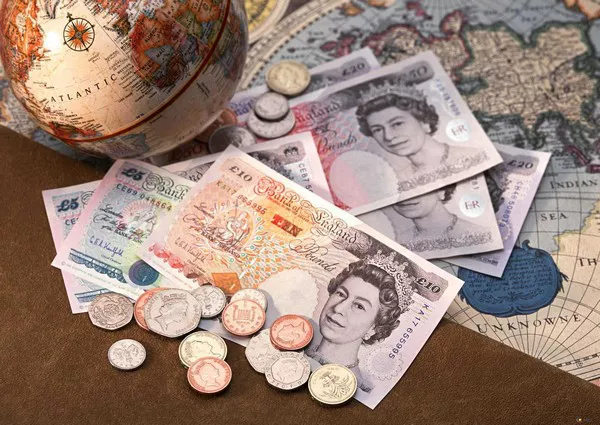In the dynamic landscape of global finance, currencies play a pivotal role in shaping economic interactions and trade relationships. Among the prominent currencies, the United States Dollar (USD) and the British Pound Sterling (GBP) stand out as key players on the international stage. Investors, businesses, and policymakers often analyze the relative strength of these currencies to make informed decisions. In this article, we delve into the factors that influence the strength of the Dollar and the Pound, providing a comprehensive understanding of their positions in the global market.
Overview of the Dollar and the Pound:
The United States Dollar, represented by the symbol USD or the sign $, is the world’s primary reserve currency and a benchmark in global trade. The Dollar’s strength is influenced by various economic indicators, including GDP growth, employment rates, inflation, and interest rates set by the Federal Reserve.
On the other hand, the British Pound Sterling, denoted as GBP or £, has a rich history and is one of the oldest currencies still in use today. The strength of the Pound is tied to the economic performance of the United Kingdom, with factors such as GDP, employment data, inflation, and decisions by the Bank of England impacting its value.
Factors Influencing the Dollar’s Strength:
Economic Indicators:
The economic health of the United States significantly impacts the strength of the Dollar. Positive indicators such as robust GDP growth, low unemployment rates, and controlled inflation contribute to a stronger Dollar. Investors closely monitor reports such as the Non-Farm Payrolls and GDP growth to gauge the health of the U.S. economy.
Interest Rates:
The Federal Reserve’s decisions on interest rates play a crucial role in determining the Dollar’s strength. Higher interest rates attract foreign capital, leading to an increase in demand for the currency. Conversely, lower interest rates can weaken the Dollar as investors seek higher returns elsewhere.
Political Stability:
The political stability of the United States is a fundamental factor affecting the Dollar’s strength. Political uncertainty and instability can lead to a lack of confidence among investors, potentially resulting in a depreciation of the currency.
Trade Balance:
The U.S. trade balance, which is the difference between exports and imports, impacts the Dollar’s strength. A trade surplus can strengthen the Dollar, while a deficit may lead to depreciation. The trade policies and agreements pursued by the U.S. government also influence the currency’s standing in global markets.
Factors Influencing the Pound’s Strength:
Economic Performance:
The strength of the Pound is closely tied to the economic performance of the United Kingdom. Positive economic indicators, including GDP growth, low unemployment, and controlled inflation, contribute to a robust Pound. Economic reports such as the Purchasing Managers’ Index (PMI) and the Consumer Price Index (CPI) are essential in assessing the health of the UK economy.
Interest Rates:
Similar to the Dollar, interest rates set by the Bank of England influence the strength of the Pound. Higher interest rates attract foreign investment, boosting demand for the currency. Conversely, lower interest rates can lead to a depreciation of the Pound.
Political Stability:
Political stability is a critical factor for the strength of the Pound. Uncertainty and instability in the UK political landscape can erode investor confidence, leading to a weaker currency. Political events such as elections and policy changes can have a significant impact on the Pound’s value.
Trade Relations:
The UK’s trade relationships and the balance of trade affect the Pound’s strength. A trade surplus can contribute to a stronger currency, while a trade deficit may lead to depreciation. Trade agreements and geopolitical factors also play a role in shaping the Pound’s position in global markets.
Comparative Analysis:
In comparing the strength of the Dollar and the Pound, it’s essential to consider the interplay of the aforementioned factors. Both currencies are influenced by economic indicators, interest rates, political stability, and trade dynamics, but the specific circumstances and policies of each nation differentiate their trajectories.
As of the current economic landscape, the Dollar has maintained its status as the world’s primary reserve currency, driven by the strength of the U.S. economy and the Federal Reserve’s cautious monetary policy. The robust GDP growth, low unemployment rates, and strategic trade policies contribute to the Dollar’s continued prominence in global financial markets.
Meanwhile, the Pound has faced its own set of challenges, including the uncertainties surrounding the UK’s exit from the European Union (Brexit). Despite these challenges, the Pound remains a major currency and reflects the resilience of the UK economy. The Bank of England’s monetary policy, economic performance, and trade relationships continue to shape the Pound’s strength on the global stage.
See also Why Is UK Pound Getting Weaker?
Conclusion:
In the ever-evolving landscape of global finance, the strength of the Dollar and the Pound is influenced by a complex interplay of economic, political, and trade-related factors. Investors and analysts must stay attuned to a myriad of indicators and events to make informed decisions in the currency markets.
While the Dollar has historically maintained its position as a global powerhouse, the Pound’s strength is rooted in the economic fundamentals of the United Kingdom. Both currencies play pivotal roles in international trade and finance, and their relative strengths will continue to be subjects of analysis and scrutiny in the global economic arena. As economic conditions evolve, so too will the dynamics that shape the strength of the Dollar and the Pound in the years to come.


